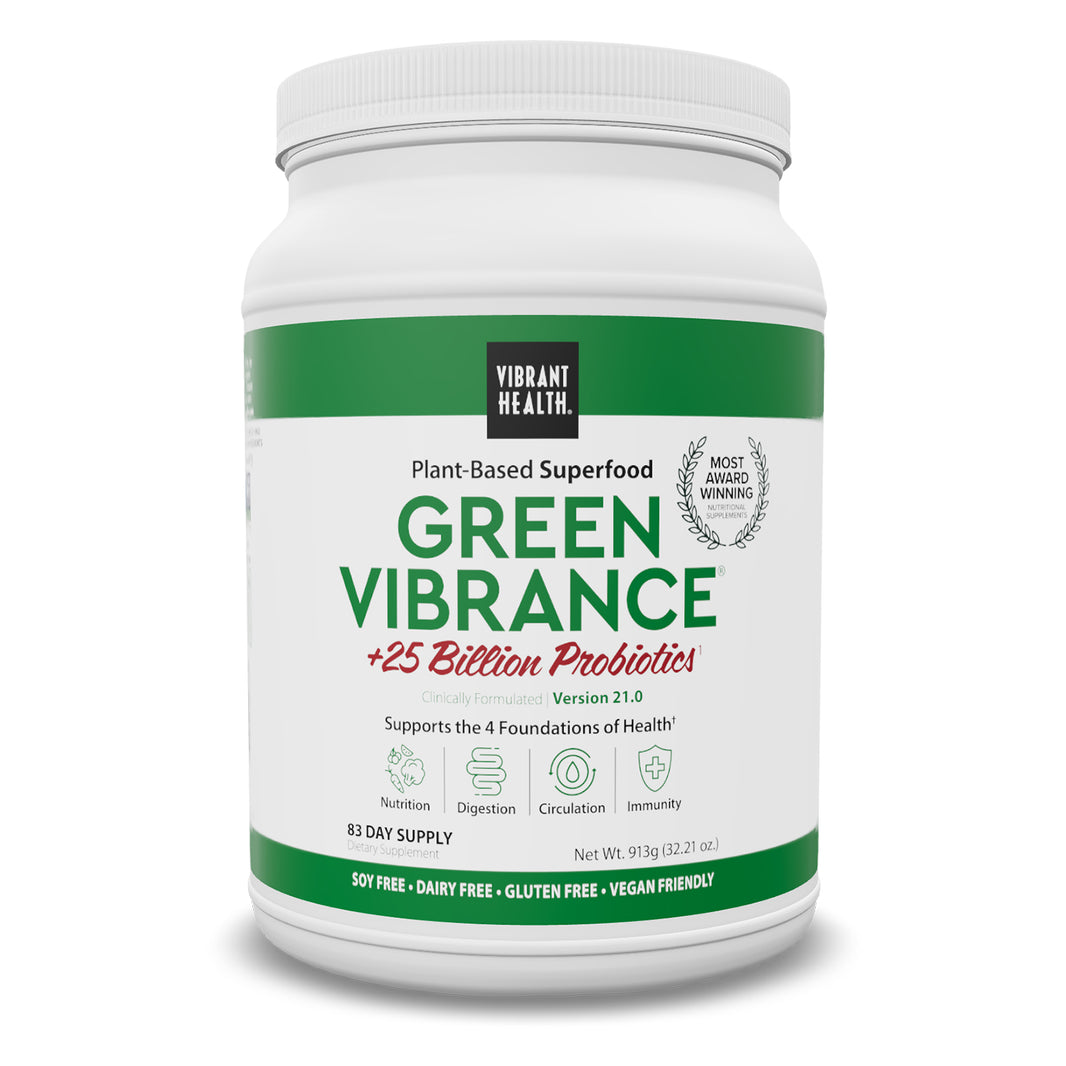Despite glycine being the simplest amino acid, it has many impressive functions in the body; not only is it found in most protein type foods, but is technically made by the body albeit in small amounts. Nevertheless growing evidence indicates that we are still deficient in this amino acid and supplementation has a plethora of health benefits.
In this blog we take a comprehensive look at glycine’s health properties and examine the mounting evidence that points towards supplementing with 10g per day not only for skin health, but just about every area of health. (1)
All humans are glycine deficient
Glycine should be classed as essential since we are deficient in glycine by around 10g per day, but due to the small amounts the body makes, it is classed as non- essential.

ANTIOXIDANT & DETOXIFICATION
When we usually think of antioxidants, the vitamins C and E usually spring to mind. What most people don’t realise is that our endogenous (made by the body) antioxidant system plays the master role in protecting the cells including the mitochondria (the energy plants of the cells) from oxidative damage via free radicals.
Of these endogenous antioxidants, glutathione is probably the most protective, and is found in every bodily system.
Glutathione production
Glutathione is made from 3 amino acids, namely glutamate, cysteine and glycine, but importantly scientific studies have demonstrated that glycine levels are the primary factor in glutathione production. Without sufficient glycine being available, the body will excrete the precursor amino acids. Interestingly vegans and vegetarians excrete around 80% more of these amino acids than meat eating people, which indicates that non-meat eaters have less ability to complete the process of glutathione synthesis. (2)
Glycine Increases production of glutathione, while reducing oxidative stress, thus protecting all tissue systems from damage. (3)
Further glycine enhances the antioxidant response by increasing the production of pyruvate in the liver, which is a powerful free radical scavenger
Nrf2 signalling
The internal antioxidant system of the body is able to respond at different levels depending on the needs at a particular time, often mediated by Nrf2 signalling. Many studies have demonstrated the up-regulation of Nrf2 by glycine supplementation. (4)
Glycine reduces the toxic effects of dangerous heavy metals such as cadmium and lead on the kidneys and liver, and a study demonstrated glycine’s ability to impressively lower the accumulation of lead in bones as well as completely reverse liver damage associated with lead poisoning. Please note that excess lead in the bones as a primary cause of bone cancers. (5)
Further study examining the effects of glycine on cadmium toxicity showed a significant reduction in the inflammatory response. (6)
Study researchers concluded by saying, “Our findings support the immense role of glycine as an antioxidant”. (7)
Glycine’s role in detoxification
We previously discussed glycine’s detoxification attributes via Nrf2 signalling and increase glutathione synthesis; interestingly glycine also possesses its own detoxification pathway.
Glycine can bind to many toxins and their metabolites, rendering these toxic byproducts relatively harmless and more water soluble allowing easier excretion via the urine. (8,9)
Glycine “detoxes” glyphosate (Roundup®); glyphosate is the most widely used herbicide in the World and carries an extensive list of health damaging attributes. Fortunately glycine found in our innovative Skin+Beyond product effectively detoxifies it.
Further glycine is a key amino acid in bile production, the other being taurine. Made in the liver and stored in the gallbladder, bile is needed for the breakdown of dietary fats. Further the production of bile acids is glycine dependent, while the bile acid cycle also functions as one of the body’s main detox pathways. (10)
ANTI-INFLAMMATORY
Glycine suppresses the activation of different types of inflammatory cells including macrophages and neutrophils. A key mode of action glycine exerts is the modulation of the expression of the master inflammatory regulator, nuclear factor kappa beta (NF-κB) in many cells. (11)
COLLAGEN & ELASTIN SYNTHESIS
One in every three amino acids that make up collagen is glycine, which represents the rate limiting factor for collagen synthesis due to the fact that blood plasma levels are well under the required amounts as established by researchers.
Further collagen comprises one third of bodily protein, and with every third amino acid being glycine in the collagen matrix, this makes glycine the most abundant amino acid.
Taking 10g of glycine per day should increase collagen production by 200% |
There are two other key amino acids required for collagen synthesis, namely proline and hydroxyproline. Fortunately these two amino acids tend to be optimal in blood plasma for collagen synthesis contrary to glycine levels which we have established are well below their optimal levels. Hence supplementing with 10g of glycine per day has proven to improve collagen synthesis by 200%. (12)
Glycine versus collagen
Some of the most obvious signs of the ageing process are attributed to the collagen rebuilding process losing its efficiency as we get older. In fact by the time we reach 25, the breakdown of collagen begins to overtake collagen renewal that manifests in wrinkles, sagging skin, lack of skin tone as well as an increased risk of joint problems including osteoarthritis and osteoporosis.
To date the majority of anti-ageing research has focused on the internal and external uses of collagen peptides or gelatine hydrolysates since these materials have been isolated mainly from animal connective tissue and contain significant amounts of glycine. However as intuitive as it may seem, consuming collagen does not equal anywhere close to that collagen being available to the body mainly for 2 reasons;
- When that collagen is broken down by the digestive tract in order to access the amino acids to be re-synthesised into collagen, but these amino acids can be used to make other amino acids that are needed in the body, so due to a complex hierarchical structure, they can be diverted for other needs
- The amount of glycine metabolised from collagen hydrolysate or gelatine is insufficient for optimal collagen synthesis (13) eg. 10g of collagen in supplements provides only 2.5g of collagen and as we alluded to above the body will not use it all.
Although there have been positive results demonstrated in collagen or gelatine studies mainly due to the glycine component in the products, adding 10g of glycine per day would deliver many of the reported benefits from collagen or gelatine supplementation, but more effectively and less expensive.
Again glycine is the key amino acid in elastin synthesis since the other ones are abundant in the body.
ANTI-GLYCATIVE
A key player in the process of ageing are advanced glycation end products or AGEs, that are formed when glucose reacts with proteins that become damaged and produce toxic metabolites. These AGEs play a huge role in the gradual breakdown of collagen as we age, which leads to a loss of elasticity in connective tissues including skin and joints and vascular tissue in the lungs, heart and brain.
This process becomes particularly exacerbated in people with high blood glucose levels that are associated with high carb diets and as seen in diabetics where these AGEs trigger a highly damaging cycle of inflammation and oxidative stress, leading to many degenerative conditions including Alzheimer’s, cataracts, heart disease and kidney problems. (14) It’s not coincidental that diabetics suffer from the aforementioned conditions more than non-diabetics.
Fortunately glycine has demonstrated significant efficacy in reducing levels of glycation in diabetic rodents, in turn lowering the associated inflammation and oxidative stress. These improvements were also seen in the hearts of rats supplemented with glycine. (15)
Further glycine has demonstrated protective effects in the eyes, preventing cataracts and glycation induced damage of the lens proteins. (16)
SKIN
Glycine’s many skin boosting attributes are afforded by its glutathione, collagen and elastin boosting attributes and other modes of action:
Antioxidant
Glycine is a key amino acid in glutathione synthesis; glutathione is the master antioxidant that protects skin cells and their mitochondria (energy plants) from free radical and oxidative stress damage. It has even been postulated to be the rate limiting amino acid for glutathione production. (17)
“Detoxification”
Glycine “detoxes” Roundup®, a pervasive and highly toxic herbicide that takes up residence in connective tissues e.g. skin, gut, joints, and further destroys the gut microbiome, in turn causing body wide inflammation that affects the skin via the gut-skin axis. (18)
Protecting the gut from inflammatory insults will keep inflammation in check that can prevent damage to the dermis and epidermis layers of skin.
Collagen & Elastin
Glycine boasts collagen and elastin synthesis properties; in a 2018 study by Spanish researchers, it was found be boost collagen levels better than collagen, and is the rate limiting factor for collagen production. (19)
Anti-glycative
Glycine exhibits anti-glycative properties that protects collagen and elastin in skin from damage. (20)
Anti-inflammatory
Glycine protects the gut barrier, and its immune functions, as well as boosting microbial numbers, in turn preventing inflammation and potential leaky gut that can impact the skin negatively via the gut-skin axis. (21)
In fact glycine shows potent anti-inflammatory attributes in preventing and ameliorating bodily wide inflammation or chronic inflammation, and that includes skin. (22)
Immunity
Glycine displays immune protection, and this includes protecting the extracellular matrix (ECM) mainly made from collagen and elastin from invading pathogens e.g. viruses that decrease collagen and elastin synthesis and degrade these key skin proteins. (23)
Further the glutathione boosting ability of glycine also improves immunity via redox balancing and detoxification Glutathione can even prevent the inflammatory storm that causes organ failure in covid patients.
How do these qualities of glycine improve skin health?
- Glycine’s glutathione boosting properties helps protect all layers of skin from free radical induced oxidative stress, in turn protecting the skin barrier, keeping skin hydrated and plump giving a brighter, healthier looking complexion.
- Better hyaluronic acid (HLA) in the dermis that boosts HLA in both dermal and epidermal layers, keeping skin hydrated, stretchy and flexible, in turn reducing fine lines and wrinkles
- Better collagen and elastin synthesis via glycine makes skin more elastic and firmer with less lines, wrinkles and sagging; further glycine (and pomegranate extract) protects the breakdown of collagen and elastin via glycation
- Overall protection of skin from breakdown via the potent anti-inflammatory activity of glycine in protecting the gut, keeping inflammation in check that can damage the skin via the gut-skin axis
MUSCLE
Glycine being the key amino acid in collagen offers strength and structure to all connective tissues including muscle.
Glycine also aids muscle conservation in many common scenarios including ageing, poor diet and lack of nutrients, and stressful conditions e.g. cancer. (24)
Sarcopenia the loss of muscle mass and strength affects 1% to 30% of the general population, but is evident in about 40% of people with gut and digestive conditions e.g. including inflammatory bowel disease and cirrhosis. (25)
See under “Gut & Digestion” that discusses how glycine improves gut health and digestion, in turn alleviating gut induced sarcopenia.
NB See pomegranate blog on how pomegranate extract prevents and reverses sarcopenia.
CARDIOVASCULAR
Mounting evidence is showing that glycine exerts a protective effect on heart disease. (26)
Various studies compared different amino acids to how they affected cardiovascular events, and concluded that high intakes of certain amino acids demonstrate cardio protection; these include arginine, cysteine, glutamic acid, glycine, histadine, leucine and tyrosine. Researchers concluded that the aforementioned amino acids were associated with a 74% decrease in cardiovascular events. (27)
Further optimum glycine levels reduce the risk of acute myocardial infarction as well as correlating with a healthy lipid and anti-inflammatory profile in blood plasma.
One of glycine’s key mechanisms lies in the activation of glycine gated chloride channels found on numerous cell lines including liver cells, macrophages, lymphocytes, platelets, heart cells, and endothelial cells that also reside in arterial walls.
Glycine has been discovered to possess the following attributes; anti-inflammatory, immune modulator, cytoprotective, platelets stabilising and anti-angiogenesis effects in rat models. (28)
Further glycine demonstrates efficacy as a blood thinning therapeutic, but without the dangerous side effects that aspirin can cause:
- A reduction in platelet aggregation or stickiness
- An increase in bleeding time
- An improvement in microcirculation
- A reduction in inflammation
Hence the reason why researchers are saying in relation to heart disease, stroke and sudden death that;
Glycine supplementation in the diet represents an effective prevention mechanism in relation to diseases involving platelet aggregation and thrombosis. (29)
Glycine is a sweet heart
Part of the ageing process includes a reduction in heart function with associated arterial stiffening and reduced blood flow.
Further due to mitochondrial dysfunction in older hearts, the breakdown of fats becomes impaired, leaving glucose as the primary fuel source. Impressively glycine helps restore some of the hearts youthful function.
In a recent study using older mice, supplementation of glycine combined with N-acetylcysteine was shown to enhance many aspects of heart function as well as stimulate gene expression and energy production in heart mitochondria more akin to younger subjects. Further the heart cells regained their fat burning ability, which N-acetylcysteine did not offer on its own. (30)
Please read about our other key ingredient, pomegranate extract that positively impacts multiple mechanisms of heart function and health, so much so it’s often referred to as “the heart fruit.”
Cholesterol
Improved blood levels of glycine offer improved blood fat status and better inflammatory markers including reduced C-reactive protein scores, higher LDL and lower triglycerides. (31)
The increased production of triglyceride rich LDL in the liver is a feature of people who suffer from metabolic syndrome. A 2012 study showed that glycine can normalise the production of triglycerides from the liver and it is thought that this effect is achieved through glycine’s influence on the central nervous system, in turn normalising level signalling. (32)
A further study demonstrated that rats with metabolic syndrome when fed a diet of 1% glycine experienced lower body weight, lower fat percentage, lower blood pressure, lower triglycerides or blood fats, lower appetite and fat storage hormones e.g. leptin and insulin and lower total fat composition. (33)
BRAIN
Glycine acts as a neurotransmitter and modulates neuronal activity, and its main activity is related to the inhibition of different brain regions. (34)
Glycine is also present in the spinal-cord and brainstem, acting as an inhibitory brain chemical using its own system of receptors that are ubiquitous across the whole nervous system, playing key roles in brain development. (35)
Ischemic stroke inflict damage to the brain via excitatory of the glutamate NMDA receptors combined with oxidative stress. Hence the reason why glycine’s neuroprotective and antioxidant attributes makes it a credible option for post stroke recovery. Several trials in Russia observed that giving 1g to 2g of glycine per day sublingual within 6 hours of a stroke for 5 days reduced oxidative stress and stabilised brain chemicals, reducing mortality within 30 days of the stroke. (36)
More recently a study found that glycine has the ability to protect neurons from death subsequent to a haemorrhagic stroke. (37)
PSYCHIATRIC/MENTAL
Glycine exhibits a range of psych disorders including:
Improving sleep
Glycine has been demonstrated to improve sleep without interfering with the circadian clock or major sleep-wake hormones. Taking glycine before bedtime proved both subjective and objective sleep, and further sleep deprived study participants given glycine before bedtime showed better daytime performance than the control group. (38)
OCD
Glycine may have potential in alleviating OCD behaviour although the evidence is very scant. There was a documented study carried out in 2010 using a 22 year old who was put on high dose glycine for 5 years, where a substantial reduction in symptoms was observed. (39)
Schizophrenia
The potential of glycine in neurological conditions as a recent field of study, nevertheless the last few years has discovered that psychosis patients show abnormal levels of glycine and glutamate in the brain, coupled with the discovery that heavy alcohol users have shown an inverse relationship between brain glycine levels and the number of heavy drinking days.
Schizophrenia subjects have experienced a reduction in symptoms by using glycine. (40)
IMMUNITY
Glycine protects the gut mucosal barrier from damage and inflammation, which affects immune cells in the gut. (41) Further glycine protects the extracellular matrix from pathogens that cause damage to collagen and elastin, key components of all connective tissues. (42)
METABOLIC
Glycine has demonstrated its ability to influence multiple pathways that are implicated in the development of metabolic syndrome highlighting its potential use in preventing and treating metabolic type disorders such as obesity and type II diabetes.
Plasma levels of glycine are commonly found to be lower in patients with obesity and type II diabetes, and supplementing with glycine has demonstrated a range of anti-diabetic effects including the stimulation of insulin release. Further there is evidence that glycine binds to glucose, in turn reducing levels of glucose in the blood. (43)
Glycine positively influences many metabolic pathways
Glycine exerts an inhibitory effect on oxidative stress (see red in the diagram above), liver glucose production and food intake as well as enhancing (see green in the diagram above) hormonal and immune responses, methylation, improving detoxification and supporting mitochondrial function. (44)
Supplementing with glycine in obese mice has demonstrated better glucose tolerance and triglyceride (blood fats) levels, in turn helping to prevent body weight gain, fatty liver and associated information. Similar results were observed in rats given a high fat and sugar diet supplemented with glycine as well as added glycine were protected from liver damage.
Glycine also normalises blood glucose, fat metabolism and lowers inflammation. A study involving 60 adults with metabolic syndrome showed that dosing with 15g of glycine per day showed significant decreases in markers of oxidative stress accompanied by appreciable reductions in systolic blood pressure. (45)
NAFLD
Glycine exhibits protective effects on the liver from non-alcoholic fatty liver disease as demonstrated in a study where rats given glycine showed reduced harm from the effects of a high sugar diet as evidenced by improved liver markers, reduced oxidative stress and reduced the fat in the liver compared to non-glycine fed rats. (46)
Anti-diabetic
In a 2002 study supplementing with 5g of glycine per day improved both insulin response and glucose tolerance; healthy subjects showed more than a 50% reduction in blood glucose after taking glycine with food without changing insulin response.
In a further animal study rats with diabetes were given glycine for 6 months showed lower levels of glucose, lower total cholesterol, lower triacylglycerol and less glycation damaged
haemoglobin. (47)
A 3 month trial using type II diabetic patients, administering 5g of glycine per day showed an appreciable decrease in HbA1C and pro-inflammatory markers as well as an increase in IFN-gamma.
Rodent studies have recently shown that adding high glycine as a supplement reduce the negative effects of a high sugar diet, boosted mitochondrial function in the liver and normalise blood pressure and triglycerides (blood fats) as well as insulin, thus preventing an accumulation of abdominal fat. Further observations included improved glutathione (the body’s most powerful antioxidant) status, a lowering of oxidative stress and normalisation of vasodilation (the widening of blood vessels) that improves blood flow and reduces blood pressure. (48)
Further glycine protected rats from diabetic cataracts via ant-glycative and antioxidant activity. (49)
GUT & DIGESTION
Glycine receptors are found on the intestinal lining, and when glycine is present, the receptors release a hormone called glycogen-like peptide-1 (GLP-1) that creates many positive effects including lipid oxidation or fat burning for energy production in the liver and fullness signalling that reduces appetite.
Expression of glycine receptors has also been demonstrated to boost the mucosal barrier, protect against gut inflammation, oxidative stress and they plethora of toxins via different mechanisms, including enhanced synthesis of glutathione (the body’s most potent antioxidant). Further in a rodent study, glycine demonstrated protective properties in rat intestines in chemically induced colitis. (50)
Furthermore glycine has been demonstrated in a piglets study to be relevant in the development of the intestines, and that low levels of glycine and the lumen of the small intestine correlated with gut dysfunction. (51)
Gastric ulcers
Glycine supplementation has been demonstrated to protect the stomach from tissue injury and alcohol induced ulceration. The study results led researchers to conclude that glycine demonstrates impressive anti-ulcer and cytoprotective properties. (52)
Alcohol
Glycine shows protection from alcohol damage in the liver, lowers blood alcohol levels and reduces the levels of triglycerides (blood fatty acids) in the brain and liver as a result of alcohol toxicity.
Leaky gut and endotoxins
Glycine exerts protective effects against leaky gut, and in reducing or preventing gut toxins escaping through the gut barrier and into the bloodstream. Glycine can bind to these protein type toxins, thus dampening the inflammatory response caused by them. (53)
Although there is no specific research on glycine’s ability to prevent or reduce autoimmune conditions, by reducing or preventing leaky gut, you are in effect achieving this positive outcome. Leaky gut is the hallmark of autoimmunity. (54)
JOINTS & BONE
The ageing process depletes collagen that becomes more difficult to replace, and this is even more pronounced in arthritis sufferers where 40% of over 65s are affected. In these sufferers regeneration of damaged cartilage requires considerable collagen synthesis with recent research studies demonstrating that this is limited by the availability of glycine.
Dietary glycine is simply inadequate to rebuild collagen at the rates required to prevent loss and damage, and hence the need for glycine supplementation for collagen synthesis. (55)
Further bone is 30% collagen, hence the importance of collagen to bone density and health.
Tendon injuries difficult to treat due to less blood supply compared to other connective tissues. However study data demonstrates that glycine supplementation may be an effective treatment for subjects with inflammatory injuries in tendons including the Achilles, and other connective tissue damage and inflammatory conditions. (56)
In a more recent study analysis, it has been demonstrated that tenocytes, the primary tendon cells involved in tissue repair, respond positively to glycine by improving the remodelling process. (57)
SPORTS PERFORMANCE & RECOVERY
Glycine boosts athletic performance in various ways. (58)
Since blood levels of glycine peak rapidly after consuming, this categorises glycine as a “rapid protein” for exercise recovery. For this reason glycine should be taken straight after exercise to start the repair remodelling process of tendons, ligaments and joints by maximising collagen synthesis. (59)
Glycine’s effect on joints and bone make injury recovery quicker and prevent injuries from occurring in the first place.
LIFESPAN
In a rodent study, researchers found that supplementing them with glycine led to a increase in lifespan of 5%; what’s even more interesting here is that the similar 5% increase and lifespan can be achieved through a diet low in methionine. (60)
Written by Clark Russell, Founder of Skin + Beyond, a unique, hybrid prebiotic drink with patented Pomegranate Extract for skin and much, much more.




























Leave a comment